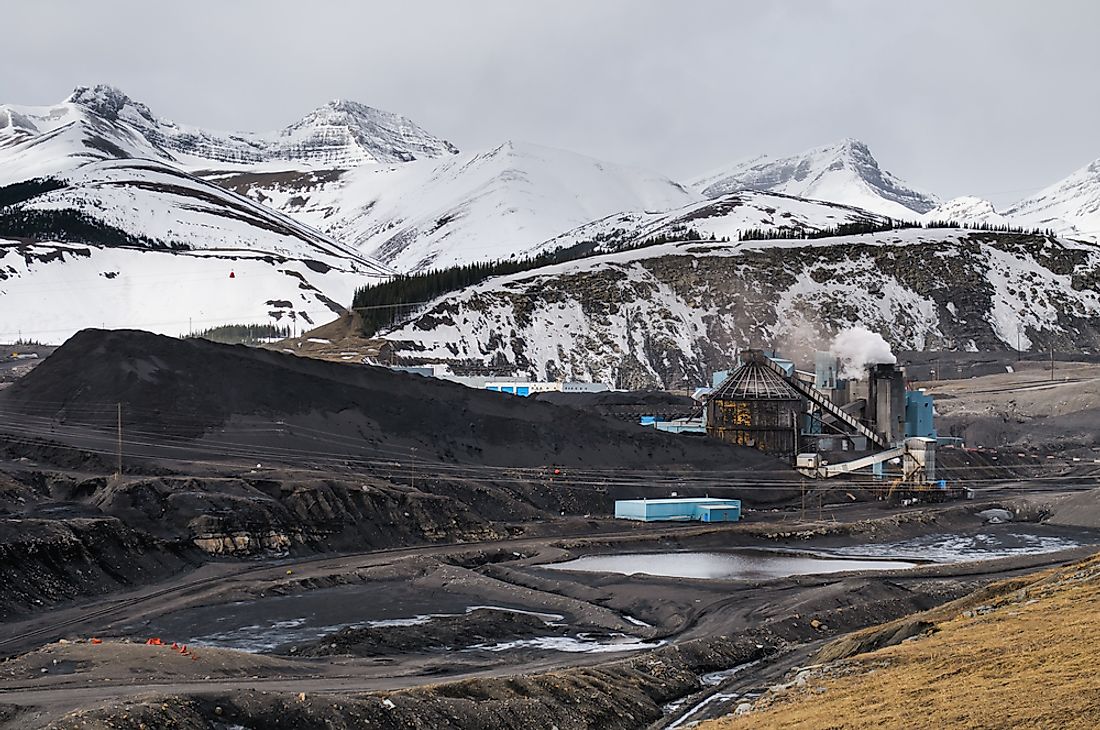Which Canadian Provinces Have Coal Mines?

Canada ranks the world’s fifth largest in coal reserves, which stands at approximately 10 billion tonnes. There are 24 permitted coals mines in Canada, and they are located in four provinces namely, Alberta, British Columbia, Saskatchewan, and Nova Scotia.
Coal Mines in Alberta
Alberta is the leading coal-producing province in Canada. The province has approximately 6 billion tons of coal reserves, dispersed over almost half of its area. Most of Canada’s coal reserves are located in the province. Coal mining in Alberta dates back to the late 19th century, and over 1,800 mines have operated since then. Currently, Alberta has nine active coal mines which produce two types of coal, namely metallurgical coal and thermal coal. The province uses over 25 million tons of coal annually in electricity generation. Seventy percent of Alberta’s electricity is generated by coal, and the province produces 65% of coal-fired electricity of Canada. Most of the thermal coal mined in Alberta is used for local power generation, and the remainder is exported to Asia, mainly South Korea and Japan.
Coal Mines in British Columbia
British Columbia is the second largest coal producing province in Canada. Mining began in the province in the 1840s by producing mainly coal to power steamers. Currently, there are ten mines in operation in three separate regions around British Columbia. The mines produce mainly metallurgical coal. Thermal coal is also produced but on a relatively smaller scale. Most of the coal produced in the province is exported to Asian countries, including South Korea, Japan, India, and China.
Coal Mines in Saskatchewan
Coal mining in the province of Saskatchewan dates back to 1857. The province is presently the third largest producer of coal in Canada with three mines currently in operation. Bienfait Mine, Boundary Dam Mine, and Poplar River Mine are all located in the city of Estevan. Lignite coal is mostly produced in Saskatchewan and presently accounts for most of its production in Canada. About 90% of the coal produced in Saskatchewan is used locally in the production of electricity. The rest is shipped by rail to Manitoba and Ontario where it is also used to generate electricity. The coal reserves in the province are estimated to be about 5.1 billion tons.
Coal Mines in Nova Scotia
Coal mining in Nova Scotia province started in the 1820s, and the province was Canada’s leading producer of coal from 1827 to 1945. The advent of steam power with the Industrial Revolution led to the early exploitation of coal deposits in the province. Nova Scotia’s coal deposits have been used to make steel and generate electricity for over 100 years. The province is the fourth largest producer of coal in Canada with two mines currently in operation. Pioneer Coal Mine is located in the town of Stellarton while Donkin mine is located in Donkin. Coal is the primary source of fuel for electric power generation in Nova Scotia. Sixty percent of electricity in the province is generated from burning coal. Coal reserves in the province are estimated to be about 3 billion tonnes.
The Future of the Coal Industry in Canada
Production of coal in Canada has been consistent for several years now, but the dwindling global demand is hurting the industry. Decreasing demand has stopped production in some coal mines in Canada. Besides, coal consumption has fallen drastically in Canada in the last decade. Global consumption of coal is now facing a threat from the recently adopted Paris Agreement, as all nations around the world plan to cut on carbon emissions.
Which Canadian Provinces Have Coal Mines?
| Rank | Canadian Province | Number of coal mines |
|---|---|---|
| 1 | British Columbia | 10 |
| 2 | Alberta | 9 |
| 3 | Saskatchewan | 3 |
| 4 | Nova Scotia | 2 |











